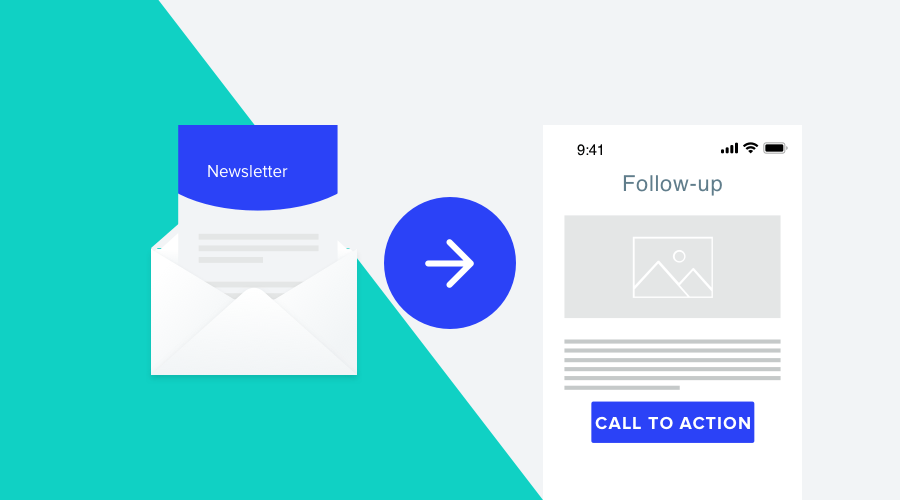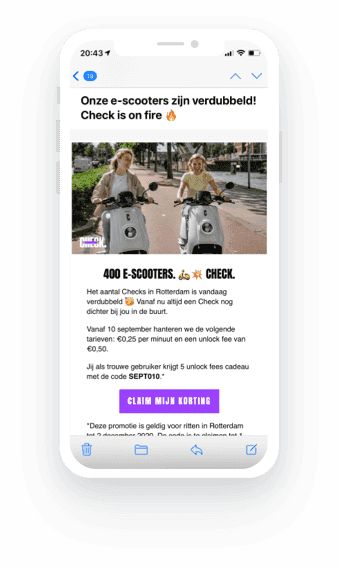Create the perfect e-mail follow-up campaigns

A 4-step strategic framework on how to create an effective follow-up sequence.

Since the beginning of Notificare, we always had the vision that every data point should be able to lead to a subsequent action or interaction. We were the first platform to introduce interactive push notifications and we have taken this vision to other marketing channels. It turns out that when you take into account customer behavior in your campaign execution, the relevance of the message increases significantly.
In an earlier post, we showed how to link website or app behavior to automated messages. But, every sent email campaign can also be a source of endeavoring engagement with your customer.
In the Notificare platform, there are multiple ways to link behavior to the next interaction. We call this Actionable Analytics. In other words, although it might be interesting to see how many people have opened your email newsletter and which link gets the most clicks (Analytics), much more important, is that you can headline these insights to a specific follow-up campaign so that you can instantly address and influence your audience's behavior.
At Check, a shared e-scooter company in the Netherlands, this has proven very effective. By linking click behavior to follow-up emails, they achieved open rates of 80%!

A strategic framework to create the perfect email follow-up sequence
Define Your Goals
First of all, you need to go back to the drawing board. You need to think about the goal of your campaign and define several sub-goals. If you know what you ultimately want to achieve, you will have a sound foundation for setting up the campaigns. The campaign goal states what needs to change and to solve the problem addressed by the campaign. Some campaign goals are broad, such as Increate Conversion, Generate Leads, Engage My Audience, but the best way is also to make them SMART.
Specific – Clearly state your objective;
Measurable – How is your goal measurable in the Notificare Platform?
Achievable – Is it a realistic goal?
Reasonable – What are the expectations? Are they reasonable?
Time-Bound – And of course, when do you want this to happen?Write your CTA('s)
Now that you have your goals clear, it's time to write out your Call-To-Actions (CTA) and draw them out. Writing a good CTA is an art and can leave a significant mark on the success of your campaign. Not only the copy of the CTA itself, the button or link, but also the image and the introductory text contribute to the final conversion or Click Through Rate (CTR).Determine your data points
Suppose you want to base a follow-up campaign on consumer behavior as a result of a previously sent email campaign. In that case, you need to determine in your strategy which data points will provide the right trigger. For example, if you send an email and after some time you want to send a reminder to everyone who did not open the email, you can only use the data point Open Email to set up your automation for this. However, if you also want to link your follow-up campaign to the click behavior of your previously defined CTA's, you will have to use these click events.Time your follow-up
And finally, you will need to determine when to send the follow-up after the measured interaction. In this framework, a constant feed loop applies and it is especially important to take into account the timing of the follow-up message. Adjust it to better respond to your gained insights.
After you have prepared your strategy based on the above framework, it is now time to execute and put the theory into practice.
Follow-up on Events
In a previous blog post, we explained the power of events. In short, events are "a detectable change in individual behavior". To set up a follow-up message based on a click on a link, we use an event.
Email Link Tracked Event is collected every time an email contact clicks on a link in any of your messages (when link tracking is enabled).
But to generate this event, you don't need to do anything at all. Notificare ensures that every click is captured and registered.
And now, if you want to react in real-time to this event, you just need to create an Automation Connector. This connector consists of two parts: the trigger itself and the corresponding follow-up campaign that is triggered. It is that simple! By creating an automation connector that reacts to an incoming event, defining when it should send out the follow-up, and deciding which URL (CTA) applies to your campaign, you have already created your first follow-up sequence.
Key Takeaways
- First of all, your follow-up campaigns need to be strategic. Using a framework will help you define your goals, write clear CTA's, determine the right data points and create timely follow-ups;
- Campaigns based on customer behavior are experienced as relevant;
- An effective follow-up sequence is easy to set up and will become a crucial tactic for your business. Once it runs, it will nurture according to your goals.
Need some guidance?
If you need help in designing your strategic goals or setting up follow-up campaigns, our Professional Services Team can always help.
